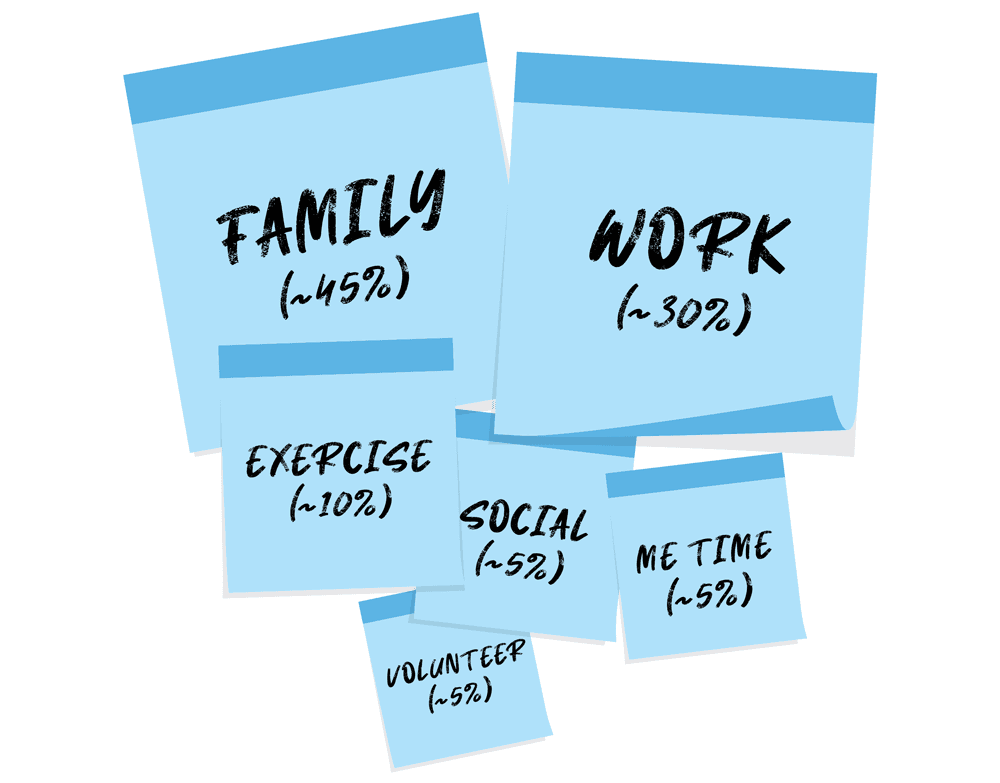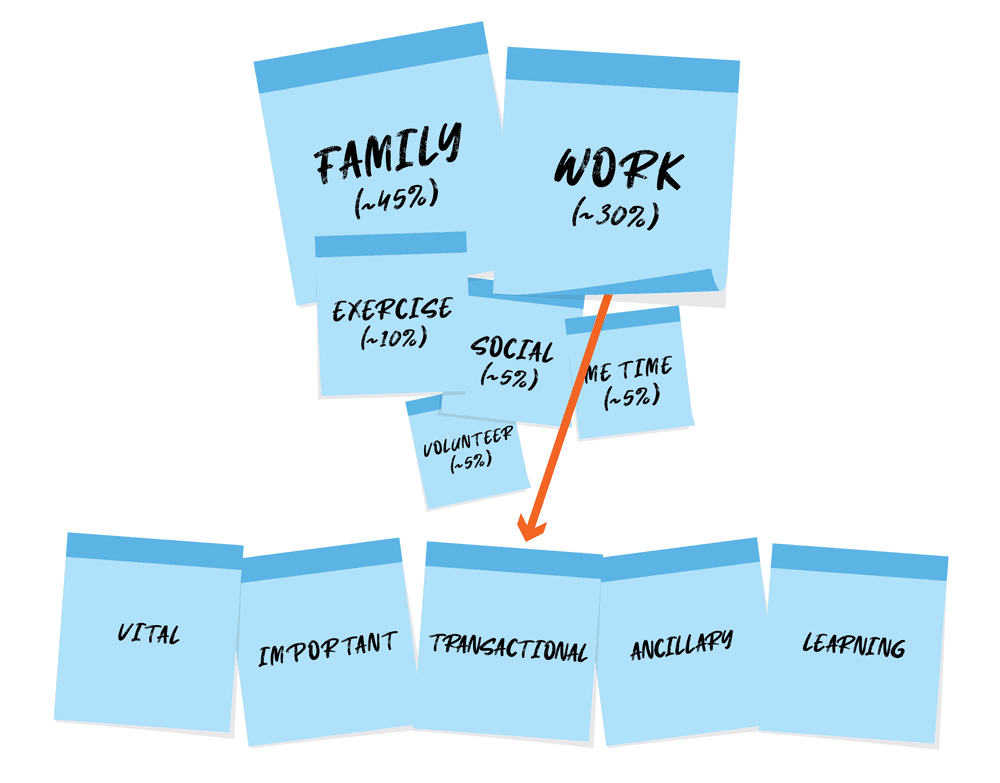Prioritize Your Time and Efforts, and Your Product Will Thank You
In product management, it's not enough to optimize your time; you must also optimize the work that is done on your product.
Great product managers are fanatical about doing the things that will make the biggest impact on their product. If something does not have a direct or indirect effect on the product, then it is not important enough to do.
Prioritizing the work that makes the most impact on customers and our business is one of the most pressing challenges for every product manager. But many product managers are so focused on prioritizing the work—which problems to solve or which features get in a particular release—that they forget prioritization starts with how they use their time. Time is finite. We get the time we have and no more. Truth be told, we do not necessarily need more time; we need to better use the time we have. One of the most common mistakes I see product managers make is not prioritizing their own time.
How many Friday afternoons have you looked back on your week and said to yourself, “Well, that week got away from me. All those fire drills and not a single thing checked off my prioritized to-do list”? Great product managers are comfortable letting some fires burn. If something is not their explicit responsibility or it does not have a direct impact on the product, they know that it should not usurp the higher priority tasks. This is one of the hardest lessons product managers must learn. It is not our job to put out every fire or perform all tasks having to do with our product.
Prioritize Your Time
Before you can start prioritizing your time at work, you need to define what is important to you across your whole life. I am not a big believer in looking at a work-life balance in its traditional sense. I think we have evolved from the neatly bifurcated world of “work” and “life.” We now have constant access to work through technology, often work remotely from anywhere we want, and communicate at varying times with teammates across time zones. Many of us no longer have a true nine-to-five job. This can be both good and bad. It means we can attend our child’s soccer game on a Wednesday afternoon or take a yoga class on a Tuesday morning and do work at other times. But it also means we run the risk of never being truly “off work,” checking our email or other communication channels throughout the day and night.
In the work environments of most product management folks, the world will never return to a clock-in and clock-out environment. So, it has become even more critical for well-being to manage this blending of activities.
Instead of trying to magically balance professional and personal activities on an unrealistic fulcrum, we should harmoniously blend our activities in a way that ultimately creates prolonged contentment. I call this our “contentment mix,” the mix of activities that help us feel satisfied, happy, fulfilled, healthy, and productive. Those activities will be both professional and personal. Start by delineating the big buckets of things that make you happiest and most productive. It might look something like this:

You do not want to get too granular here. Just identify the major things on which you want to spend time, with some relative distribution across all the areas. Everyone’s contentment mix is different. Maybe travel is one of your contentment items. Or volunteer work. Mine, of course, would make time for naps and watching The Golden Girls. Make your contentment mix personal to what matters to you.
Use the VITAL map to manage time
Once you have your full life laid out, you can start breaking down the specifics of the work area of your mix. Remember, you do not necessarily need more time at work; rather, you need to better optimize the time you have. Are you spending your time on the things that will have the most impact on your product and on you as a product manager?
First, deconstruct and evaluate how you currently spend your time by assigning categories to your activities. You can use the VITAL time management tool to help with this. This tool allows you to see where your time is going. Review every work activity you did over the past week or two. If you have the information on everything you did in the past month, that is even better. Make sure to capture every meeting, task, time spent emailing, or any other major workstream that took your time. Go through each activity and map it on the VITAL map.
The categories of a VITAL map are Vital, Important, Transactional, Ancillary, and Learning, and each represents an area where most of your efforts should be going.
Vital
Vital activities are those that are essential to your product and the core of your product manager role. While you may do it in collaboration with your teammates, you should be the one responsible for these tasks because they directly involve activities or decisions about your product. Examples include voice of customer sessions, design sprints, product strategy generation, and stakeholder meetings.
Important
Important activities are those that affect your product but are possibly owned by teammates. You should be involved with but not drive these activities. Examples include marketing campaigns for your product, sales demos, engineering reviews, technology architectural decisions, and supply chain updates.
Transactional
Much of our workday involves simply providing or requesting information or support. These “transactions” often do not themselves have a material impact on the product, but they are an important part of working with others and ensuring work in progress continues smoothly. These back-and-forth interactions take up more of your time than you may realize. Examples include sending emails to clarify a request, communicating with the team on message apps, and attending meetings to represent the product.
Ancillary
Ancillary activities support your product but are not led by product managers. You may participate occasionally, but for the most part, these are left to someone else’s expertise. Examples include company supplier decisions, distributor discussions, and large business customer relationship meetings.
Learning
Learning activities are those that help you grow your knowledge about product management, business, your industry, or any other areas of importance to you. Product managers are on a continuous learning journey, so carving out time for learning activities is important. I also include downtime and stress-management activities such as a midday walk or meditation in this category.

Prioritizing for your product
Of course, it is not enough to optimize only your time; you must also optimize the work that is done on your product. Organizations use many valuable models to prioritize their product work. Truthfully, all prioritization methods have pros and cons. At the end of the day, a vast majority of prioritization can be accomplished through understanding these three things:
1. Does it matter to customers?
You may also need to answer sub-questions:
- If so, how many customers? Is it important to one big customer or a larger swath of the customer base?
- This is important to know because we generally do not want to build something simply because one customer requested it.
- Which customers? (target segments, persona, or another category)
- This can be important because some segments may be more important or strategic for the organization than others.
If you cannot answer the first question in the affirmative, why are you even considering it? You should probably just move on to something else. If you answer yes to question one, move on to question two:
2. Will customers pay for it?
A potential sub-question with related considerations may also need to be asked:
- If not, is there residual value to other offerings? Does it shore up a portfolio gap that then allows for increased sales? Does it contribute to customer retention even if it does not produce incremental new revenue?
If you can answer question two or its sub-questions affirmatively, move on to question three:
3. Is it taking you in a direction you want to go?
Also consider some potential sub-questions:
- Is it where you want your product to go?
- Is it where your company wants to go?
Even if you answer yes to questions one and two, that does not necessarily mean the product is aligned with your organization or product strategy. Question three asks you to examine the long-term impact of the product. For example, if it is something that could sell quite well but requires you to focus on a geographic market or industry that you intend to exit or deprioritize over the next few years, you will need to decide what is best. Sometimes the few years of additional income from a legacy market allows us some leeway for focusing on a few riskier but higher-growth efforts. Other times, it simply drains resources that could be used in more strategic areas. Therein lies the importance of your judgment. No prioritization matrix can replace your experience and judgment.
Prioritization starts with your time. Forcing balance among your life’s priorities is key to happiness and success. Start there then move on to prioritizing your time at work. If your time is spent on the right things, you will have better inputs to the prioritization of the team’s efforts on your product.
To continue your learning on time management and PM skills, check out IMMUTABLE: 5 Truths of Great Product Managers today.

JJ Rorie
CEO, Great Product Management
JJ Rorie is faculty at Johns Hopkins University, teaching undergraduate and graduate-level product management courses. She is the author of "IMMUTABLE: 5 Truths of Great Product Managers," and is Chief Executive Officer of Great Product Management. JJ is a speaker, advisor, trainer, and coach, having worked with some of the world's largest companies, and also hosts the popular podcast Product Voices.
More from JJ





